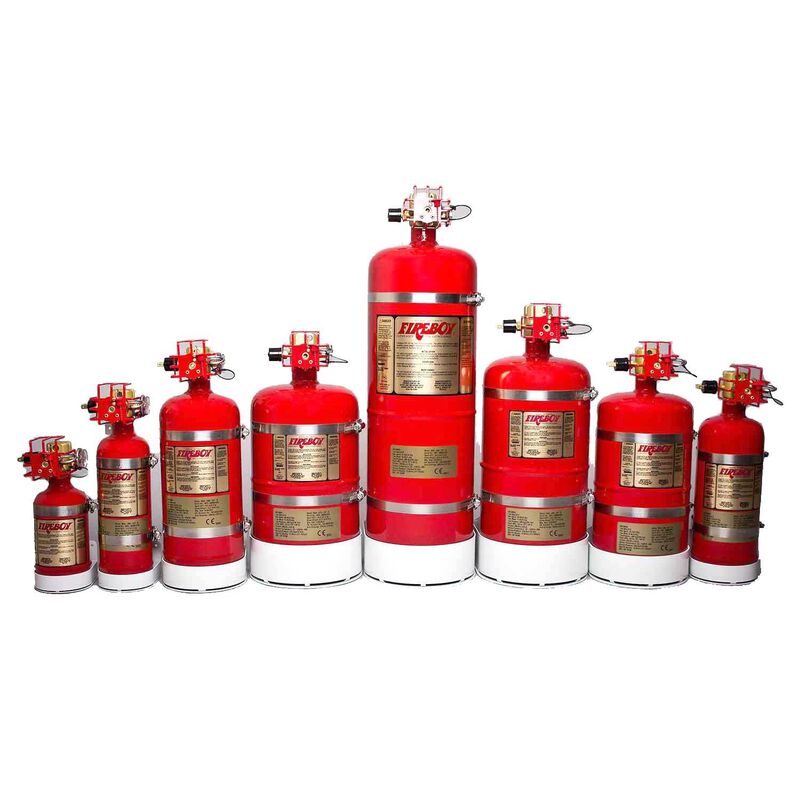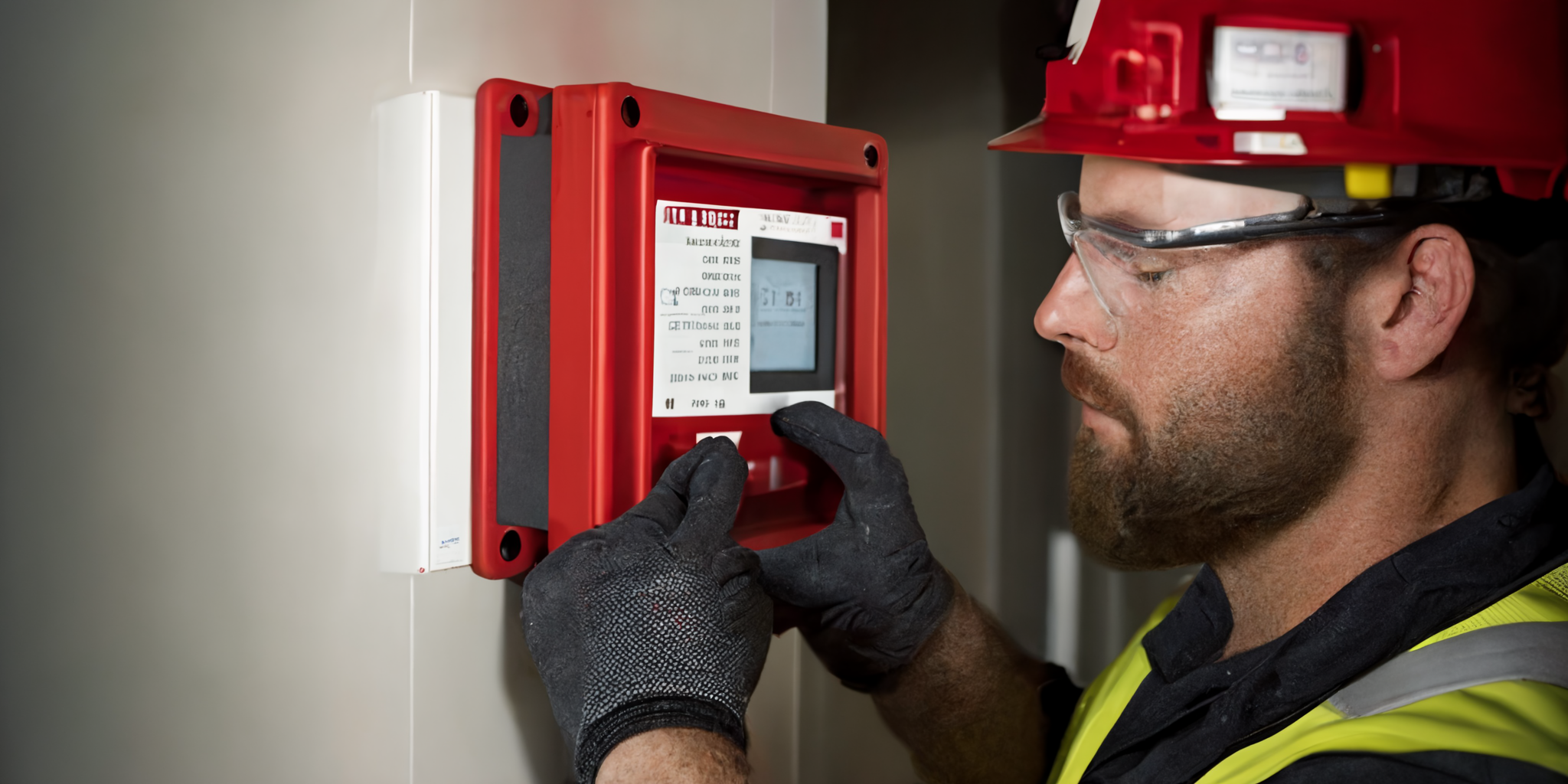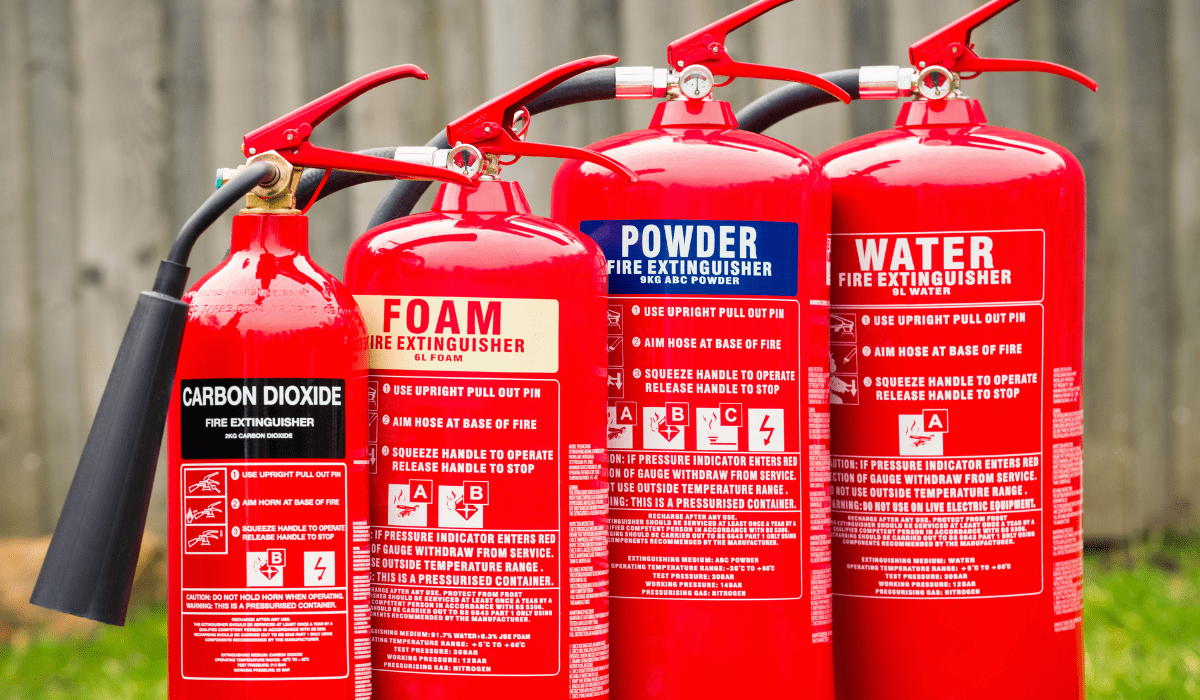A Halon Fire Suppression System extinguishes fires by interrupting the chemical reaction. It uses a gas that’s lighter than modern chemical agents.
Halon Fire Suppression Systems were once the gold standard for protecting high-value assets from fire damage. Utilizing halogenated agents, these systems suppress fires without leaving a residue that could harm delicate electronics or other sensitive equipment. Their effectiveness in quickly quelling flames without damaging property made them a preferred choice in environments like data centers, archives, and aircraft.
However, due to environmental concerns, production of new Halon systems ceased under the Montreal Protocol due to its ozone-depleting properties. Despite this, existing systems are still in use and maintained, and recycled Halon continues to service critical areas where water or powder-based systems could cause more damage. Alternatives to Halon are gaining popularity as they offer similar protection without the environmental impact.

Credit: www.westmarine.com
The Importance Of Fire Suppression
Fire suppression systems are vital for safety and protection. They act fast to control flames. This protects people and prevents damage. Halon systems are special. They stop fires without harming equipment. Let’s look closer at how they save lives and safeguard critical spaces.
Protecting Lives And Property
Halon fire suppression systems are life-savers. They respond in seconds. This reduces risk of injury or worse. Valuables and buildings stay safe too. Halon gas does not leave residue. This means it’s safe for electronics and art. Quick action preserves much more than just structures.
Critical Environments For Halon Systems
Some spaces need extra care during fires. Think computer rooms and archives. Halon systems work well here. They do not harm sensitive items. Aircraft and boats also use them. In these places, traditional water systems could cause more harm. Halon tackles flames without adding another threat.
- Server rooms need clean agents like Halon
- Museums with priceless artifacts rely on it
- Submarines and spacecraft use Halon for safety
Choosing the right fire suppression system means weighing the risks and benefits. With Halon, critical environments and valuable assets receive the best protection.

Credit: buildops.com
Halon 101: The Basics
Protecting against fire means understanding your tools. Halon fire suppression systems play a key role in firefighting, especially in places where water can’t be used. Learn the essentials to know how Halon keeps spaces safe.
Chemical Composition And Properties
Halon refers to a group of chemicals known as brominated hydrocarbons. These chemicals are colorless, odorless gases that stop fires quickly. They are mostly used in areas with sensitive equipment, like server rooms and museums.
| Chemical | Formula | Boiling Point | Ozone Depletion Potential |
|---|---|---|---|
| Halon 1211 | CBrClF2 | -3.7°C | High |
| Halon 1301 | CBrF3 | -57.8°C | High |
Despite being effective, Halon’s production has ceased due to environmental concerns. The Montreal Protocol recognized its high ozone depletion potential.
How Halon Extinguishes Fires
Fires need three things: heat, fuel, and oxygen. Halon interrupts the fire’s chemical reaction. When Halon enters a fire, it absorbs the heat and displaces oxygen. This puts the fire out quickly.
- Interrupts the chemical reaction of fire
- Absorbs heat, which lowers the fire’s temperature
- Displaces oxygen, starving the fire
Due to these properties, Halon systems are ideal for spaces where water damage must be avoided. Its swift action ensures minimal damage and downtime.
Historical Context Of Halon Use
Exploring the Historical Context of Halon Use unveils a fascinating journey. The Halon fire suppression system was once the pinnacle of fire safety technology. Let’s dive into its development and how it changed fire prevention.
Development And Adoption In Fire Suppression
The story of Halon as a fire-fighting marvel began in the 1960s. Scientists wanted a method to extinguish fires quickly, without damaging sensitive equipment. Halon rose as the perfect candidate. Its low toxicity, combined with effectiveness in suffocating fires, made it ideal for protecting high-value assets.
- 1960s: Halon introduced for military and aerospace use.
- 1970s: Halon gains popularity in protecting data rooms and museums.
- Advanced Systems: Sprinkler systems soon included Halon options
Transition From Previous Firefighting Methods
Before Halon, water and dry chemicals were common methods to fight fires. But these techniques often caused collateral damage, deemed unacceptable in critical environments.
| Previous Method | Limitations | Halon’s Advantage |
|---|---|---|
| Water | Damage to electronics | No collateral damage |
| Dry Chemicals | Messy cleanup, potential harm | Clean and safe |
Thus, Halon changed the game. It became the go-to solution for critical applications where water damage was not an option.
Types Of Halon Fire Suppression Systems
When it comes to protecting valuable assets from fire, Halon fire suppression systems stand out. They stop fires fast, without damaging equipment. There are two main types. Let’s explore them.
Halon 1301 Systems
Halon 1301 systems provide protection for whole rooms and large spaces. This gas reaches fires quickly and doesn’t leave residue.
- Floods the area: Quickly fills the space to stop fires.
- Non-conductive: Safe for electronic equipment.
- Clear gas: No cleanup needed after discharge.
Halon 1211 Handheld Units
Halon 1211 handheld units are portable and ready for quick response. They are ideal for smaller fires or areas where an installed system isn’t possible.
| Feature | Benefit |
|---|---|
| Portable | Easy to carry and use anywhere. |
| Quick Action | Rapid response to put out fires fast. |
| No Residue | No mess left behind after use. |
Deployment Scenarios
The Halon Fire Suppression System plays a vital role in protecting valuable equipment and personnel across various settings. Understanding its deployment scenarios reveals how this powerful agent ensures safety in high-risk environments. Let’s dive into the diverse areas where Halon systems are essential.
Aviation And Military Applications
Safety is paramount in aviation and military operations. The Halon Fire Suppression System effectively extinguishes fires without harming sensitive electronic equipment. It’s ideal for airborne applications where quick response is crucial.
- Aircraft cockpits and cabins
- Onboard military vehicles
- Weapon systems and ammunition storage
These crucial areas rely on Halon’s non-corrosive and electrically non-conductive properties.
Data Centers And Telecommunication Facilities
Data centers and telecommunication facilities house a wealth of technology critical for daily operations. Halon systems offer swift fire suppression that minimizes damage and downtime.
| Area of Protection | Benefits |
|---|---|
| Server Racks | Localized fire suppression |
| Switchboards | Avoids electrical short circuits |
| Backup Storage | Protects data integrity |
Halon systems ensure business continuity and protect critical infrastructure from fire-related disasters.
Environmental Impact And Regulations
The Halon Fire Suppression System has been a stellar fire-fighting agent for decades. Environmental concerns, however, have spurred a re-evaluation. It’s crucial to understand the footprint of these systems on our planet, particularly their role in ozone depletion and global regulations governing their use.
Ozone Depletion Concerns
Halon compounds have a significant role in depleting the ozone layer. This layer, high in Earth’s stratosphere, acts as a barrier against harmful UV rays. Data shows that Halon gases release bromine and chlorine when discharged. These elements are much more destructive to the ozone than their counterpart, chlorine from CFCs.
International Treaties And Halon Phase-out
Globally, steps have been taken to reduce Halon use. Key among these is the Montreal Protocol, an international treaty adopted in 1987. This treaty was revolutionary in forging a collective effort to phase out ozone-depleting substances, including Halons.
- Milestone agreements under the Protocol include timelines and reductions targets.
- Country-specific Halon phase-out programs follow rigorous guidelines and benchmarks.
- Alternatives such as FM-200 and Inergen systems are now gaining traction because of their lower environmental impact.
Compliance with such international mandates is imperative for businesses using Halon fire suppression systems.
Safety Considerations And Best Practices
Ensuring the safety of individuals and property is critical when using Halon Fire Suppression Systems. Strict safety considerations and adherence to best practices are non-negotiable for their effective operation. This section covers key areas to maintain safety while implementing these systems.
Operating In Occupied Spaces
Occupied spaces pose unique challenges for fire suppression systems. It is essential to guarantee the well-being of individuals during Halon discharge. Advanced warning systems and clear evacuation procedures form the foundation of safety in such scenarios.
- Install audible and visual alarms to alert occupants pre-discharge.
- Clearly mark exits and provide evacuation maps in visible locations.
- Train staff on proper evacuation protocols.
- Ensure zero obstruction near exit paths.
Maintenance and Regular Inspections
Maintenance And Regular Inspections
Regular maintenance and inspections are pivotal for the optimization and safety of any fire suppression system. Neglecting this can result in system failure during critical moments, endangering lives and property.
- Conduct semestral checks for system integrity.
- Replace Halon according to manufacturer’s expiration dates.
- Perform leakage tests annually to detect any compromises.
- Ensure replaceable components comply with industry standards.
| Checklist Item | Frequency |
|---|---|
| Complete System Audit | Annually |
| Halon Concentration Levels | 6 Months |
| Emergency Lighting | Quarterly |
| Alarm Functionality | Monthly |
Credit: www.scribd.com
Alternatives To Halon Systems
As we phase out Halon due to environmental concerns, alternative fire suppression methods are in demand. These options provide similar protection without harming the ozone layer. Let’s explore some leading alternatives.
Emerging Fire Suppression Technologies
New technologies are surfacing to take Halon’s place. These include:
- Inert gas systems that reduce oxygen levels to stop fires.
- Chemical clean agents, similar to Halon, but more eco-friendly.
- Water mist systems that use fine sprays to cool and suffocate fires.
- Aerosol-based suppressants that create a fog to halt fire without residue.
All these systems protect assets while being safe for people and the planet.
Retrofitting Buildings With Modern Solutions
Modernizing old buildings with new fire suppression tech is key.
| System Type | Advantages | Considerations |
|---|---|---|
| Inert Gas Systems | Eco-safe, no residue | Space for cylinder storage |
| Chemical Clean Agents | Rapid response, safe for electronics | Higher cost than some gases |
| Water Mist Systems | Low water usage, minimal damage | May not suit all fire types |
| Aerosol-Based Suppressants | Compact, easy installation | Regular maintenance required |
Evaluating a building’s needs helps in choosing the right system. Tailored solutions ensure safety and compliance with current standards.
The Future Of Fire Suppression
The landscape of fire suppression is changing rapidly. The introduction of the Halon Fire Suppression System marked a significant advancement in our ability to tackle blazes swiftly and efficiently. Yet, as we look ahead, the question emerges: what does the future hold for fire suppression technology? Innovations in chemical agents and the integration of smart technology are set to redefine what it means to be state-of-the-art in safeguarding infrastructure and lives against the threat of fire.
Innovation In Chemical Fire Suppressants
The quest for new fire suppressants is full of exciting progress. Modern chemical agents are being developed to replace Halon, known for its ozone-depleting properties. The new suppressants aim to be more environmentally friendly without compromising on performance.
- Lower toxicity to ensure safety during and after deployment
- Zero ozone depletion potential for minimal environmental impact
- Rapid extinguishing capabilities for quicker response to fires
These breakthroughs in chemical agents promise a more sustainable future in fire suppression, prioritizing both human and environmental health.
Integrating Smart Technology Into Fire Safety
Smart technology is set to bring fire suppression systems into the digital age. Intelligent sensors can detect fires more accurately, while automated systems can respond in real-time, tailoring the response to the specific characteristics of the fire. Innovations include:
| Technology | Function |
|---|---|
| IoT Sensors | Real-time monitoring and alerts |
| AI Algorithms | Predictive analysis for fire prevention |
| Automated Dispensers | Immediate and targeted chemical deployment |
With these technologies, the efficiency and accuracy of fire suppression systems will reach levels previously unattainable, ushering in a new era of safety.
Frequently Asked Questions For Halon Fire Suppression System
What Is A Halon Fire Suppression System?
A Halon fire suppression system discharges Halon gas to extinguish fires quickly without damaging sensitive equipment.
How Does Halon Suppress Fires?
Halon extinguishes fires by chemically interrupting the combustion process upon disbursement into a fire affected area.
Is Halon Safe For Enclosed Spaces?
Halon is safe for use in enclosed spaces since it does not leave residue or cause breathing problems during short exposure.
What Are The Types Of Halon Systems?
There are two main types of Halon systems: total flooding systems and streaming Halon fire extinguishers.
Can Halon Systems Be Refilled?
Yes, qualified professionals can refill Halon systems, although Halon’s production is regulated due to environmental concerns.
Why Is Halon Phased Out?
Halon is phased out because its release contributes to ozone layer depletion, leading to increasing environmental regulations.
Conclusion
Safeguarding your assets against fire is vital; Halon systems are a top-tier solution. They tackle flames fast, minimizing damage and downtime. Remember, regular maintenance ensures reliability and compliance. For effective fire suppression, trust Halon to deliver proactive protection. Choose safety, choose Halon.

I’m Abdus Sobur, a highly skilled and professional Fire Safety Officer with a passion for safeguarding lives and property. Over the course of my career, I’ve conducted numerous successful fire safety audits, earning a reputation for excellence in ensuring public safety.
In addition to my role as a Fire Safety Officer, I’m also dedicated to raising awareness about the importance of fire safety. Through my blog, I share insights into the functions of different fire safety equipment, aiming to empower individuals with the knowledge they need to protect themselves and their communities.
I’m driven by a deep commitment to promoting fire safety awareness and preventing fire-related incidents.

